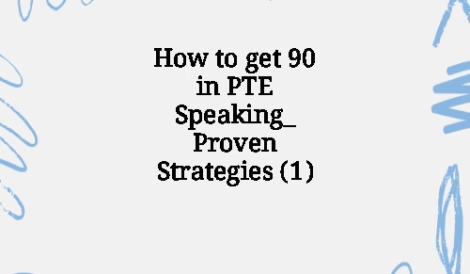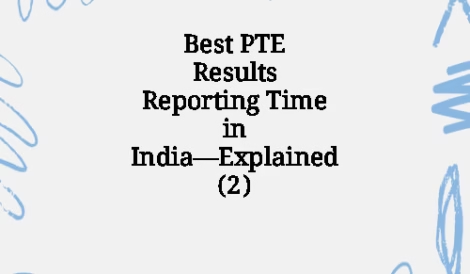PTE Writing Template_ How to Write Essays in Nepal
PTE Writing Template: How to Write Essays in Nepal
Master the PTE essay writing task with this reliable template, tailored for Nepali students aiming to score high with clarity, structure, and vocabulary.
Understanding the PTE Essay Task
The PTE Academic Writing section includes the Essay task, where you are required to write a 200–300 word essay in response to a prompt. You are given 20 minutes to complete this task. The essay is evaluated based on content, form, grammar, vocabulary, coherence, spelling, and written discourse.
Nepali students often face challenges with grammar, vocabulary, and structure. The template below is designed to address these specific issues while ensuring a high score.
Essay Template Overview
This PTE essay template follows the four-paragraph structure:
-
Introduction
-
Body Paragraph 1
-
Body Paragraph 2
-
Conclusion
Each paragraph has a specific function and key sentence patterns you should use and adapt.
Introduction Template (40–60 words)
In today’s rapidly changing world, the topic of [insert essay topic] has become increasingly important. While some people argue that [state one side of the argument], others believe that [state the other side]. This essay will discuss both perspectives before arriving at a logical conclusion.
Example for Practice (Topic: Online education is better than traditional classroom learning):
In today’s rapidly changing world, the topic of online education versus traditional classroom learning has become increasingly important. While some argue that online platforms offer better flexibility, others believe classroom learning ensures better discipline and interaction. This essay will discuss both perspectives before arriving at a logical conclusion.
Body Paragraph 1 – Supporting One Viewpoint (60–80 words)
On one hand, those who support [side A] argue that [main reason]. This is because [explanation or example]. For instance, [relevant example]. Furthermore, [add supporting detail or second reason]. This makes [side A] a valid approach in many situations.
Example:
On one hand, those who support online education argue that it offers unparalleled flexibility. This is because learners can access study materials anytime, anywhere. For instance, working professionals in Nepal can attend global courses without relocating. Furthermore, it reduces travel and accommodation costs. This makes online learning a valid approach for modern learners.
Body Paragraph 2 – Supporting the Opposing View (60–80 words)
On the other hand, advocates of [side B] believe that [main reason]. This is particularly relevant because [explanation or example]. For example, [relevant instance or detail]. In addition, [another supporting point], which makes [side B] a preferable choice for many individuals.
Example:
On the other hand, advocates of traditional classroom education believe that it ensures face-to-face interaction and better discipline. This is particularly relevant because students can ask questions and receive immediate feedback. For example, in physical classrooms across Kathmandu, teachers can observe and guide students more effectively. In addition, group activities enhance communication skills, which makes classroom learning a preferable choice for many.
Conclusion Template (40–60 words)
In conclusion, both [side A] and [side B] have their own merits. While [mention the strength of side A], [side B’s key advantage] cannot be ignored. In my opinion, [your position] because [brief reason]. Therefore, a balanced approach should be considered for the best outcomes.
Example:
In conclusion, both online and traditional education have their own merits. While online learning offers flexibility, the discipline and interaction of classroom settings cannot be ignored. In my opinion, a blended learning model is ideal because it combines the strengths of both systems. Therefore, a balanced approach should be considered for the best outcomes.
Grammar and Vocabulary Tips for Nepali Students
Common Errors and Fixes
| Common Error | Correction | Explanation |
|---|---|---|
| He give / She go | He gives / She goes | Subject-verb agreement |
| People is thinking | People are thinking | “People” is plural |
| Much students | Many students | “Students” is countable |
| I am agree | I agree | “Agree” is not used with “am” |
| He said me | He told me / He said to me | Use “tell” for direct object |
Useful Vocabulary for Essays
-
Advantages/Disadvantages: benefit, drawback, advantage, limitation, strength, weakness
-
Transition Words: furthermore, however, on the other hand, in addition, for example, therefore, in conclusion
-
Academic Verbs: argue, claim, suggest, emphasize, support, oppose, highlight
-
Phrases to Use:
-
It is widely believed that…
-
A growing number of people think that…
-
From an educational perspective…
-
This raises the question of whether…
-
It is essential to understand that…
-
Tips to Maximize Essay Scores in Nepal
1. Practice Typing in English
Most PTE test centers in Nepal require computer-based typing. Practice regularly to increase typing speed and accuracy.
2. Follow the Word Limit
Write between 200–300 words. Essays below 200 or above 300 are penalized.
3. Use Simple Yet Clear Language
Avoid overly complex vocabulary if you’re not confident using it correctly. Clarity scores higher than complexity.
4. Avoid Repetition
Use synonyms and varied sentence structures. Repeating the same idea or phrase can lower your vocabulary and written discourse score.
5. Stick to Formal Tone
Never use informal expressions like “gonna,” “wanna,” or emojis. Keep your writing academic.
6. Time Management
Spend the first 2 minutes planning, 15 minutes writing, and the last 3 minutes proofreading for grammar, spelling, and coherence.
Practice Topics for Nepali Students
Try writing essays on the following PTE-style topics using the above template:
-
Should students be required to wear school uniforms?
-
Is technology making people less social?
-
Do the advantages of studying abroad outweigh the disadvantages?
-
Is it better to work for a big company or a small business?
-
Are single-gender schools more effective than coeducational ones?
Final Thoughts
Using a structured template allows Nepali test-takers to focus on content and clarity without getting lost in grammar or organization. With consistent practice and adherence to the 4-paragraph structure, achieving a high score in the PTE Essay Writing task is absolutely attainable. Remember, quality writing is the result of planning, practicing, and polishing.





